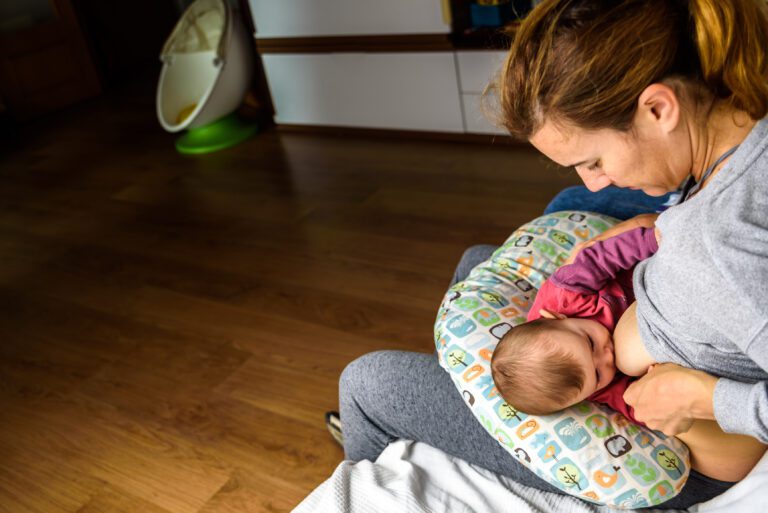What Are Postpartum Aches?
As a new mom, the last thing you’re thinking about is your posture, right? But what if you learned that proper posture and lifting mechanics could relieve the new‑found neck, shoulder, and back pain (postpartum aches) that seems to have come along with the baby?
Physical therapists have noticed a trend among moms who’ve just given birth and during baby’s first year. They experience persistent pain associated with many activities that involve baby’s care: carrying, breastfeeding, bathing, and even taking baby for a stroll.
Approximately 85% of the women receiving physical therapy complain of pain in their neck, shoulders, and back. Other new moms say they’re experiencing more headaches than before.
How your posture changes
During pregnancy, your body’s posture changes as your ever-expanding belly puts more pressure on your spine and back. Your center of gravity shifts forward and your base of support is shifts as well. Postpartum, you may even notice your shoulders becoming more rounded from cradling the baby, especially during nursing. You may also notice that you’re carrying your head and neck in a way that they’re protruding in front of you, rather than in its relaxed and upright position atop your shoulders.
After giving birth, you’re unable to exercise for a few weeks. You’re unable to quickly lose those extra pounds that you gained during pregnancy and you have about 2.5 extra pounds in your breasts. This alone can cause upper chest pain and could well impinge on your nerves.
The good news is that with proper posture and a few modifications in your daily activities, you can relieve and even prevent most of these hot spots from ever getting achy or strained.
Follow these tips to use your body to its best advantage and get rid of those baby care aches once and for all.
Also read: Nurturing Your Postpartum Body
Breastfeeding
The proper posture for breastfeeding (above) requires a support pillow under your baby so that the strain of their weight is taken off of your arms and shoulders. Hold your neck in its natural position and avoid looking down for long periods of time (we know that’s hard to do, babies are so cute!)
Diapering
Avoid bending too much when changing baby’s diaper to keep from adding stress to your back. You may need to kneel on the floor to change your little one unless you have an adjustable changing table that you don’t have to bend over.
Carrying
Avoid carrying your baby on your hip—this is a guaranteed move that will bring on a back ache, and even lead to leg pain as well. Instead, cradle your child centered in your upper body using the strength of your arms, shoulders and back together to hold their weight.
Bathing
Use an infant tub that you can safely place on a solid surface to bathe your infant. This surface can be one that allows you to stand. Gather all the bathing essentials in advance so you have baby and needed items within close reach. Never leave your child alone in an infant tub.






Comments are closed.